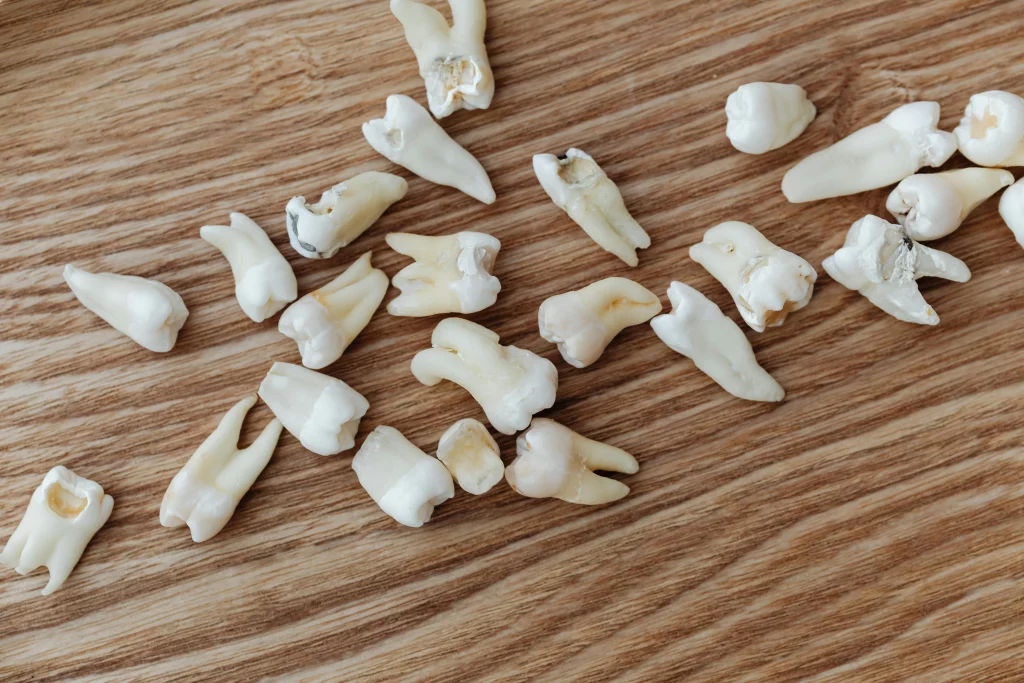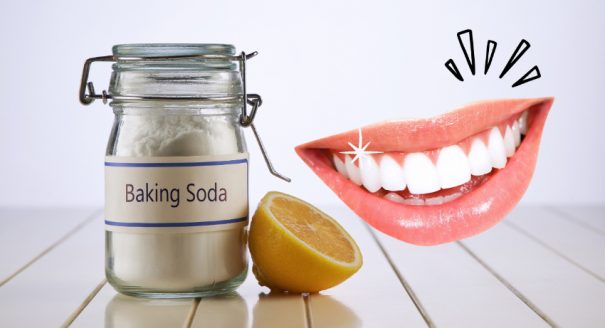DIY teeth whitening has become increasingly prevalent, particularly on social media platforms like TikTok, where influencers frequently demonstrate methods for achieving a brighter smile using household substances such as baking soda, hydrogen peroxide, lemon juice, and charcoal. These viral trends typically promise rapid results, affordability, and convenience, often accompanied by striking before-and-after images that may encourage viewers to attempt these methods themselves.
Yet, it is important to recognize that such seemingly harmless beauty hacks can, in fact, inflict significant and sometimes irreversible harm to dental health.
Dental enamel, which serves as the primary protective barrier for teeth, is both delicate and non-regenerative. Many popular at-home whitening techniques are abrasive, acidic, or chemically imbalanced, which can cause tooth sensitivity, enamel erosion, gum irritation, and even heightened susceptibility to staining over time.
This blogwill examine the potential dangers associated with DIY teeth whitening, analyze why viral trends may not be reliable sources of dental advice, and present dentist-endorsed alternatives that are both safe and effective for long-term oral health. Given the importance of preserving dental integrity, it is prudent to rely on evidence-based methods rather than unverified shortcuts for achieving a whiter smile.
The Rise of DIY Teeth Whitening Trends
Social media has become a hub for so-called beauty innovations, particularly in the realm of teeth whitening. Platforms like TikTok, Instagram, and YouTube are saturated with influencers demonstrating DIY methods—often involving substances such as baking soda, lemon juice, charcoal, or even hydrogen peroxide. These approaches are frequently promoted as “natural,” “cost-effective,” and “rapid,” which undoubtedly appeals to individuals seeking immediate cosmetic enhancement.
Yet, popularity does not equate to safety. Dental professionals worldwide have expressed significant concern regarding these unregulated practices. Substances featured in these viral videos are, in many cases, overly abrasive or acidic and, when misapplied or overused, pose a real risk of permanent dental damage. Documented complications include the erosion of enamel, increased tooth sensitivity, gum irritation, and even chemical burns. Ironically, these “natural” methods can increase susceptibility to staining and decay over time, undermining the original goal of achieving a whiter smile.
Perhaps most troubling, these widely circulated videos rarely reference scientific evidence or professional dental guidance. While a brief improvement in tooth brightness is sometimes observed, it often comes at the cost of long-term oral health. Teeth serve not only an aesthetic function but are integral to overall well-being. Relying on unverified online trends for dental care is a risk that is simply not justified.
Common DIY Whitening Methods and Their Risks
Despite the widespread allure of do-it-yourself teeth whitening—primarily due to its affordability and perceived convenience, many of the popular methods circulating online can, in fact, be detrimental to dental health. Social media platforms frequently showcase various techniques, ranging from household items such as baking soda and lemon juice to easily accessible over-the-counter kits. Yet, the majority of these approaches lack rigorous scientific validation and professional endorsement.
Not only are these methods often unproven, but they may also inflict lasting damage on tooth enamel and gum tissue. The initial cost savings may seem attractive; however, the long-term consequences such as increased tooth sensitivity or enamel erosion can necessitate costly professional intervention.
In the following sections, the most common DIY whitening strategies will be examined, alongside the significant oral health risks they entail.
Baking Soda and Lemon Juice
This widely-circulated DIY whitening method, mixing baking soda and lemon juice owes its popularity to the accessibility of its ingredients, both common staples in most households. Baking soda is often lauded for its gentle abrasiveness, while lemon juice, high in citric acid, is thought to provide a natural bleaching effect. At first glance, this combination appears to offer a convenient and seemingly safe alternative to commercial whitening products. Yet, closer scrutiny reveals significant cause for concern.
The mixture of baking soda and lemon juice results in a substance that is both highly abrasive and markedly acidic. Baking soda’s coarse particles can erode enamel, the protective outer layer of teeth, particularly when applied with force. Simultaneously, the citric acid in lemon juice actively softens and demineralizes enamel, leaving it even more susceptible to damage.
Ultimately, this process can lead to irreversible thinning of the enamel. Such enamel loss not only heightens tooth sensitivity and discomfort but also greatly increases the risk of cavities, discoloration, and progressive dental decay. What may begin as an appealing, “natural” whitening solution can, in reality, jeopardize long-term oral health and compromise the appearance of one’s smile.
Hydrogen Peroxide Rinses
Hydrogen peroxide is a common ingredient in many dentist-approved whitening products, chiefly because of its proven ability to break down surface stains and brighten teeth when used properly. Still, the fact that it is utilized in professional treatments should not be mistaken as a green light to use it undiluted at home.
On social media platforms such as TikTok and YouTube, it is increasingly common to encounter individuals advocating for the direct application of undiluted hydrogen peroxide either by rinsing or by using cotton swabs. While this might appear to be a convenient shortcut to whiter teeth, dental professionals consistently caution against such practices.
Exposure to high concentrations of hydrogen peroxide, or using it for extended periods, can result in chemical burns to the gums, tongue, and other oral soft tissues. There is also the risk of developing tooth sensitivity, inflammation, or even internal damage to the tooth’s structure over time. Some individuals may experience burning sensations or develop white patches in the mouth; both are indicative of tissue irritation.
Even when diluted, hydrogen peroxide should only be used with considerable caution and under the supervision of a dental professional. Its presence in over-the-counter products does not equate to safety for unsupervised, do-it-yourself use. Improper handling can cause more harm than benefit and may necessitate professional intervention to remedy the damage.
Activated Charcoal
Activated charcoal has recently surged in popularity as a so-called “natural” teeth whitening agent, largely due to extensive promotion by influencers and commercial brands. These sources often claim that charcoal can absorb toxins and efficiently remove dental stains, typically recommending it in powder form or as an additive in toothpaste for rapid whitening results.
Despite these enthusiastic endorsements, it is important to note that activated charcoal is, in fact, quite abrasive. The enamel, which serves as the protective outer layer of teeth, is not designed to endure the harsh mechanical action produced by charcoal’s gritty texture. Progressive abrasion leads to enamel erosion, which is irreversible. As enamel diminishes, the underlying dentin is exposed resulting in increased tooth sensitivity and a more yellow appearance. Ironically, excessive use of charcoal can actually heighten the risk of tooth discoloration and decay—the very problems consumers hope to address.
Additionally, charcoal particles may become lodged in the gums or dental crevices, potentially causing irritation or inflammation. Despite its “natural” reputation, current clinical evidence does not support the long-term safety or efficacy of activated charcoal for teeth whitening. In fact, the consensus among dental professionals is clear: this is a trend best avoided by those who wish to maintain optimal oral health.
Whitening Strips and Kits
Over-the-counter whitening strips and at-home whitening kits are frequently marketed as convenient and affordable alternatives to in-office dental procedures. These products typically contain bleaching agents, such as hydrogen peroxide or carbamide peroxide, which can effectively reduce surface stains on teeth when used as directed. Nevertheless, their widespread availability does not eliminate the potential risks associated with improper use.
A significant concern is the tendency for misuse. Many individuals mistakenly assume that longer application or more frequent use will accelerate whitening results. In reality, such practices may increase tooth sensitivity, irritate the gums, and even damage the enamel or soft tissues within the oral cavity.
Furthermore, these products are generally manufactured as “one-size-fits-all” solutions, without consideration for unique dental anatomy or the presence of restorations like crowns or fillings. As a result, users might experience inconsistent whitening, with some teeth appearing brighter than others, or dental restorations retaining their original coloration. For those with untreated dental issues, such as cavities or gum recession, at-home kits may exacerbate existing problems or cause significant discomfort.
Given these considerations, self-administering whitening treatments without professional supervision can easily lead to complications or overlooked risks. It is highly advisable to consult a dental professional prior to beginning any whitening regimen, regardless of product claims regarding safety or professional endorsement.
The Science Behind Tooth Enamel

Tooth enamel functions as the primary protective barrier for the teeth, shielding them from thermal fluctuations, acidic substances, and bacterial invasion. Despite its relatively thin structure, enamel displays remarkable durability. Nevertheless, it lacks regenerative capabilities; once enamel is eroded or damaged, the loss is irreversible. This permanent damage increases the risk of dental decay, hypersensitivity, and discoloration.
It is also important to note the risks associated with many widely promoted do-it-yourself whitening methods. Although such techniques are often presented as “natural” or “safe,” they can compromise enamel integrity. The use of abrasive agents, acidic components, or improper bleaching practices may gradually wear down this crucial protective layer. Over time, this process can result in persistent sensitivity, heightened cavity susceptibility, gum recession, and the potential necessity for extensive restorative dental procedures.
Consequently, individuals should exercise caution before adopting trending whitening strategies, especially those lacking professional endorsement. Prioritizing the preservation of enamel is fundamental—not only for maintaining aesthetic appearance, but also for ensuring long-term oral health.
Professional Whitening vs. DIY Methods
In today’s digital landscape, one cannot ignore the overwhelming presence of teeth whitening trends circulating across social media platforms. While the appeal of inexpensive, do-it-yourself methods is understandable, there remains a substantial distinction between these online “hacks” and the treatments administered by dental professionals.
Although over-the-counter products and home remedies may appear accessible and budget-friendly, they frequently lack both the rigorous safety protocols and the personalized approach found in professional care. The potential for uneven whitening, increased tooth sensitivity, and even permanent enamel damage is a genuine concern when individuals opt for unregulated at-home solutions.
Professional whitening, conversely, is characterized by a focus on both efficacy and patient safety. Dentists employ clinically validated formulas in controlled concentrations, carefully evaluating each patient’s unique dental structure including gum health and enamel integrity prior to any procedure. This individualized care not only enhances the likelihood of achieving optimal results but also mitigates the risks associated with improper use of whitening agents.
Ultimately, an informed comparison between professional and do-it-yourself options underscores the importance of prioritizing long-term oral health over the allure of quick, inexpensive fixes. Making thoughtful decisions in this regard can help prevent temporary solutions from leading to lasting dental complications.
Safety and Efficacy
When considering tooth whitening, prioritizing safety is essential, and professional treatments clearly offer distinct advantages over at-home methods. Dentists conduct individualized assessments, evaluating oral health and screening for concerns such as cavities or periodontal issues before selecting an appropriate whitening approach tailored to the patient’s needs.
In a clinical context, dental professionals utilize scientifically calibrated bleaching agents at concentrations proven to be both effective and safe. These substances are applied with precision, frequently enhanced by specialized lights or laser activation, which optimize results while minimizing risks to enamel and soft tissues. Throughout the procedure, the dentist closely monitors the patient for indications of sensitivity or discomfort and can modify the treatment protocol in real time to ensure optimal protection.
Conversely, over-the-counter whitening products lack this degree of personalization and professional oversight. Many employ standardized formulations that fail to account for an individual’s dental history, enamel integrity, or susceptibility to sensitivity. Consequently, users often report inconsistent outcomes, increased discomfort, or, in some cases, lasting damage, issues that are typically avoidable under professional supervision.
Ultimately, professional tooth whitening extends beyond mere aesthetics. It is a process designed to achieve durable, safe results while safeguarding long-term oral health.
Customized Treatment Plans
Professional teeth whitening stands out particularly because of the individualized care involved in the process. Before initiating any whitening procedure, dentists perform a comprehensive assessment of your oral health. This includes evaluating tooth sensitivity, reviewing any existing dental restorations such as crowns or fillings and examining the state of your gums.
These considerations are significant, as they directly affect both the efficacy and the safety of the whitening process. For instance, patients with heightened tooth sensitivity may require milder whitening agents or abbreviated treatment durations. Similarly, individuals with dental restorations need a tailored approach, since such materials do not react to whitening agents in the same manner as natural teeth.
By developing a customized treatment plan, dental professionals mitigate the risks of adverse effects such as gum irritation, uneven whitening, or potential damage to sensitive areas. This personalized methodology enhances comfort and optimizes the likelihood of achieving a more natural and uniform result.
In summary, a bespoke approach to teeth whitening acknowledges the distinctiveness of each patient’s oral health, making professional whitening not only a more effective solution but also a safer one when compared to generic, over-the-counter alternatives.
Tips for Maintaining a Bright Smile Safely
Maintaining the brightness of your smile doesn’t simply end after whitening—it’s an ongoing process. To preserve those results, it’s important to adopt straightforward, consistent habits that safeguard your teeth and minimize new staining. Here are several practical strategies to help you sustain a healthy, radiant smile over time, all while avoiding potentially harmful or overly aggressive methods.
Practice Good Oral Hygiene:
Maintain a bright smile by brushing your teeth at least twice a day using a fluoride toothpaste. Don’t forget to floss daily to remove plaque and food particles between teeth where stains can develop. Using an antiseptic mouthwash can also help reduce bacteria that cause discoloration and keep your breath fresh.
Limit Stain-Causing Foods and Beverages:
Certain foods and drinks like coffee, tea, red wine, and tobacco products are notorious for staining teeth over time. Try to reduce your intake or rinse your mouth with water soon after consuming these to minimize their impact. Using a straw for beverages can also help limit direct contact with your teeth.
Regular Dental Check-Ups:
Professional cleanings every six months remove surface stains and tartar buildup that daily brushing can’t tackle. Your dentist can also monitor your oral health, provide personalized advice for maintaining whiteness, and recommend touch-up treatments if needed to keep your smile looking its best.
Conclusion
Although at-home teeth whitening methods might appear both accessible and cost-effective, they can actually pose significant risks to your dental health including potential harm to your enamel and irritation of your gums. To safeguard your oral wellbeing, it is advisable to seek guidance from dental professionals, who are equipped to offer safe and effective whitening treatments tailored to your individual needs. At Graham Park Dental, we are dedicated to providing evidence-based, personalized care to help you achieve a brighter, healthier smile in a manner that prioritizes both your safety and comfort. We invite you to schedule a consultation and take a proactive step towards enhancing your smile with confidence.
Frequently Asked Questions
1. Are DIY whitening methods safe?
Many over-the-counter whitening remedies circulating online lack credible scientific backing and, in fact, may jeopardize your oral health. These unverified methods frequently lead to enamel degradation, heightened tooth sensitivity, and irritation of the gums. Attempting such techniques without professional supervision not only increases the risk of uneven whitening but can also cause lasting damage. Consulting a qualified dental professional is essential to ensure any whitening treatment is both safe and tailored to your specific dental needs. Prioritizing expert guidance is strongly advised before pursuing any teeth-whitening approach.
2. Can I use baking soda to whiten my teeth?
Although baking soda can effectively remove some surface stains, its abrasive nature poses a risk if overused, it can gradually erode tooth enamel. Over time, this loss of enamel may increase tooth sensitivity and the likelihood of cavities. To maintain optimal oral health, it’s advisable to use baking soda infrequently and only under the supervision of a dental professional.
3. How does professional whitening differ from DIY methods?
Professional whitening treatments aren’t generic; they’re actually customized to your specific dental situation. Dentists assess your individual needs and then select the right concentration of whitening agents, nothing random or careless. These procedures are performed under the supervision of trained professionals, which helps prevent common issues like gum irritation or tooth sensitivity. This tailored approach doesn’t just deliver a noticeably brighter smile; it also ensures the results are both safe and long-lasting. In short, it’s a scientific process, not a gamble.
4. What are the risks of using hydrogen peroxide at home?
Undiluted hydrogen peroxide isn’t something you want to mess around with. It can irritate your gums, damage sensitive tissue in your mouth, and make your teeth way more sensitive than you’d like. Because of these risks, it’s really not a great idea to try hydrogen peroxide treatments on your own. You should always check with your dentist first, seriously, leave this one to the professionals if you care about your oral health.
5. How can I maintain white teeth after professional whitening?
To maintain optimal dental aesthetics, it is essential to adhere to a consistent oral hygiene routine, which includes daily brushing and flossing. Limiting the consumption of staining agents such as coffee and red wine can also significantly reduce discoloration over time. Furthermore, attending regular professional dental cleanings plays a crucial role in preserving the results of whitening treatments and promoting overall oral health. Consistent application of these practices will help sustain a brighter, healthier smile.


